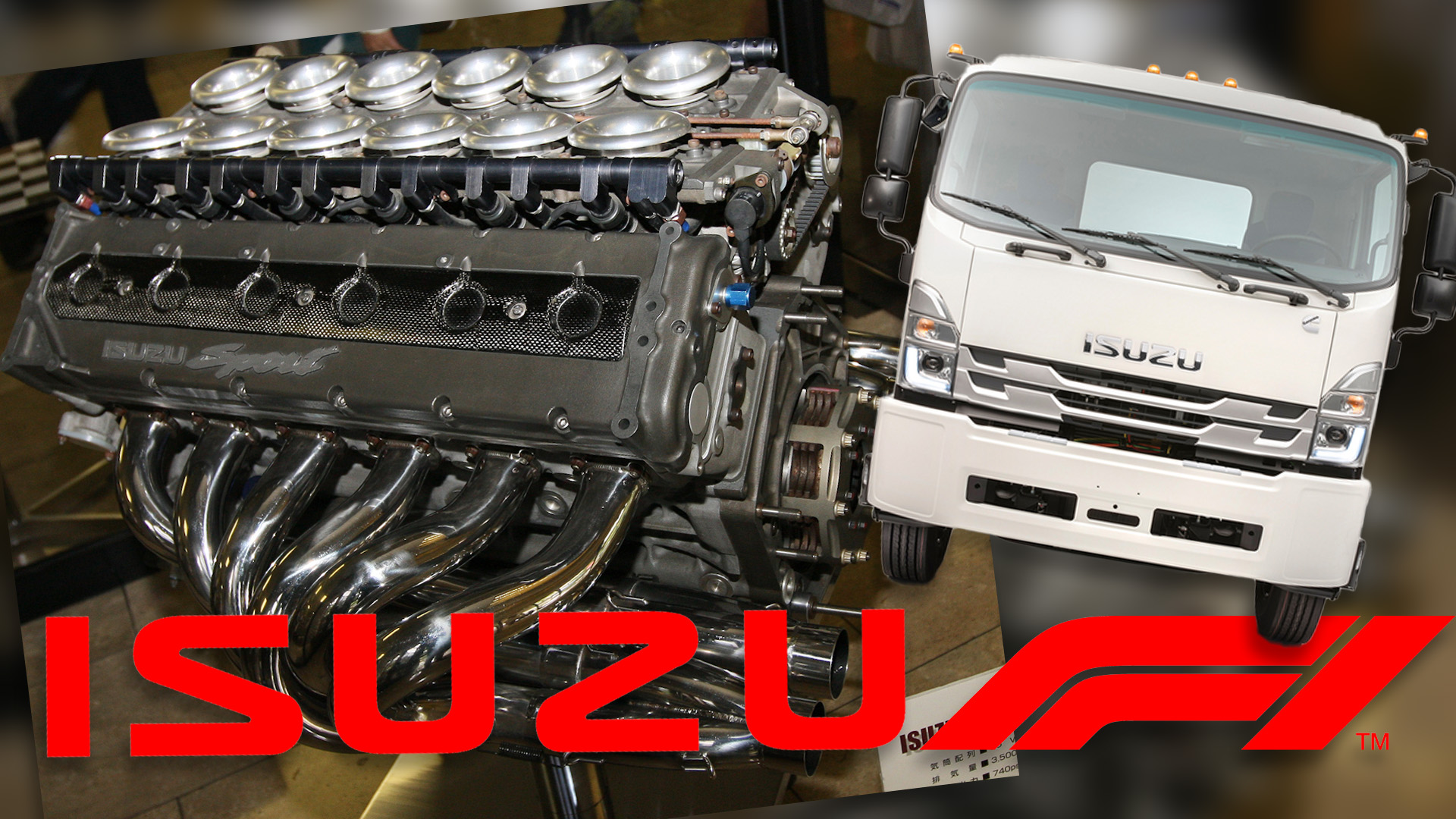

Isuzu is a name you probably recognize from cab-over trucks, and if you’re old enough, maybe a handful of cars and SUVs. It’s a humble, unromantic brand that once wanted you to think of it as something more, as a name to be spoken alongside the biggest in the biz. It tried to make that happen with the biggest moonshot possible: a V12 Formula 1 engine.
This all began in the late 1980s when Isuzu had big aspirations and partnerships with major automakers in Europe and the United States. On our shores, it was partnered with GM, which created a one-off, all-aluminum Isuzu V8 in a unicorn Chevy Beretta concept car that escaped the crusher. Up to this point, Isuzu hadn’t even mass-produced any engines with more than six cylinders, aside from some diesel V12s of at least 15 liters. But dangit, Isuzu believed in itself, so in 1989 it decided to see what it was really capable of by building a race engine.

According to an account by Motor Pasion, this engine was originally meant to be just an engineering exercise, maybe producing a Group C-worthy engine that it wouldn’t field in racing. Then it decided to just try making an F1 engine right out of the gate but within tight parameters. Design would be handled by just four people, and most of the manufacturing would be done in-house.
This culminated in the P799WE, a 3.5-liter V12 that made 730 horsepower and 304 pound-feet of torque, revving to 14,000 rpm, according to Stav-Tech on Facebook. Isuzu was so pleased with the result that it wanted to test the engine in a real F1 car. That’s where its partnership with Lotus came into play.

Lotus had already tuned the suspension for the Isuzu Impulse, so the companies had a strong relationship. By this point, Lotus had sunk to backmarker status and would’ve been looking for any performance gain available. It agreed to trial the Isuzu V12 during mid-season testing in 1991, which took place at Silverstone after the British Grand Prix.
For the test, Lotus re-tailored its 102B to fit the Isuzu engine instead of the Judd V8, making a car called the 102C. It shared the track with eventual 1991 champion Ayrton Senna, in his Honda V12-powered McLaren, and reportedly finished six seconds adrift of its time. This was despite Isuzu’s engine apparently not having an alternator, meaning it had to run off heavy batteries on board that added weight. And that’s on top of the fact that the chassis—while designed around Lamborghini’s V12—sure wasn’t meant for an Isuzu motor.

Lotus’s team manager Peter Collins apparently complimented Isuzu for its work, as the 730-hp V12 was much more powerful than the 660-hp Judd EV V8 it had used so far that season. But Lotus wouldn’t commit to using the engine; it apparently didn’t want to take chances with an unproven supplier after the (often literal) blowup of the similarly powerful, but cripplingly unreliable Lamborghini V12.
There may have also been performance issues, which many accounts of the engine’s history gloss over. While the Lotus 102C was six seconds off Senna’s testing time, the V8-powered 102B qualified only four seconds off at the British GP. Despite being more than 10 percent more powerful than the V8, the V12 was significantly heavier. Depending on the source, it’s said to have weighed 331 to 348 pounds, as compared to the 280-lb Judd as reported by Motorsport Magazine. That would’ve amounted to about a five-percent increase in weight, altered distribution, and no apparent increase in torque.
Isuzu may have had significant room for improvement with its V12, but even if it fleshed them out, there were better teams to invest in than Lotus. The team was in what would prove to be its death spiral, racing its final Grand Prix in 1994. Isuzu may have also not had the money to keep the shallow-pocketed team afloat, as 1991 was the year Japan’s bubble economy popped, so it was no time to get an expensive F1 engine program off the ground.

In the end, of the 10 engines supposedly commissioned, between one and six were actually built, with one surviving in Isuzu’s company museum, Isuzu Plaza. Still, the V12 F1 engine program ended the way it was meant to: as a what-if, an exercise for the imagination. Let it run wild, and it’s fun to imagine history playing out differently. Maybe Isuzu would’ve taken an F1 title in time. Maybe it’d be a bigger player in the automotive landscape today. Maybe the now-rare Impulse RS would’ve been the first in a long lineage of performance cars.
Ah well, at least a canceled F1 engine is better than no F1 engine at all.
Got a tip or question for the author? You can reach them here: james@thedrive.com